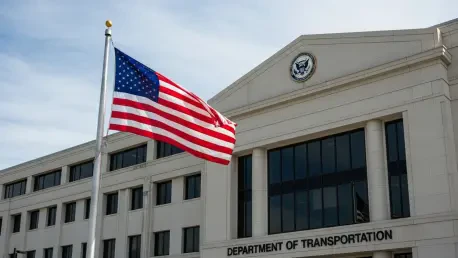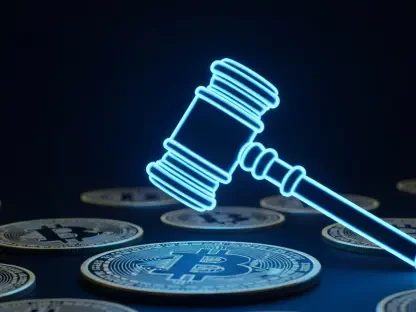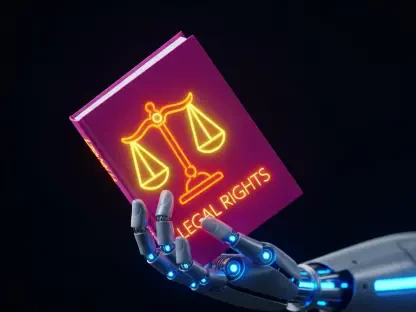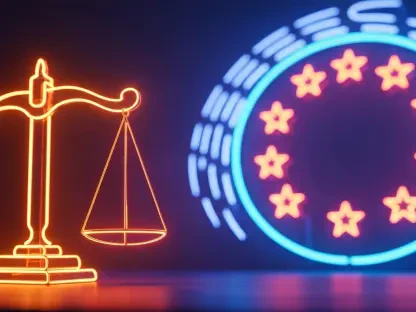Overview of the Transportation Sector and Regulatory Context
Imagine a nation where goods move seamlessly across vast highways, planes crisscross the skies with precision, and rail networks power industrial growth—yet all of this operates under a complex web of federal rules that can either enable or stifle progress. The U.S. transportation sector stands as a cornerstone of the economy, contributing trillions annually through freight, passenger travel, and infrastructure development. It touches every aspect of daily life, from commuting to the delivery of essential goods, making its efficiency and innovation critical to national prosperity.
This sprawling industry encompasses diverse segments such as aviation, highways, rail, and maritime, each governed by key federal entities like the Department of Transportation (DOT), the Federal Aviation Administration (FAA), and the National Highway Traffic Safety Administration (NHTSA). These agencies oversee safety standards, infrastructure projects, and operational guidelines, ensuring a balance between public welfare and economic activity. Major private players, including airlines, shipping companies, and logistics firms, rely on this framework to navigate competitive markets while adhering to stringent mandates.
Currently, federal oversight in transportation is both a shield and a barrier. While regulations protect safety and environmental standards, they often slow innovation and burden businesses with compliance costs. As debates over modernization intensify, the stage is set for a transformative shift under the current administration’s focus on deregulation, aiming to reshape how this vital sector operates in response to economic and technological demands.
Regulatory Activity Under Trump’s Second Administration
Unprecedented Volume of Rulemaking Projects
The DOT is experiencing a historic surge in regulatory activity, with a clear tilt toward reducing federal constraints. According to the latest Unified Agenda of Regulatory and Deregulatory Actions, the department is managing 291 active rulemaking projects, including 133 newly introduced initiatives. Of these, 119 are classified as deregulatory, marking a substantial increase compared to historical benchmarks and reflecting an aggressive push to streamline operations.
This unprecedented volume signals a deliberate effort to overhaul existing frameworks within transportation. The sheer number of projects suggests a comprehensive review of rules across aviation, rail, and road safety, potentially accelerating processes for businesses. However, this rapid pace also raises questions about the depth of analysis behind each action and whether oversight might be compromised in the rush to cut red tape.
The implications for the sector are vast, ranging from faster project approvals to reduced compliance costs for operators. Yet, industry stakeholders remain cautious, recognizing that such a high level of activity could strain resources at federal agencies, possibly leading to delays or inconsistencies in implementation as the DOT navigates this ambitious agenda.
Focus on Economic Analysis and Major Rules
Central to this deregulatory wave is a heightened emphasis on economic impact assessments. The administration has prioritized cost-benefit analysis to justify regulatory changes, ensuring that new rules or repeals align with fiscal responsibility. Under the Congressional Review Act, rules with an annual economic impact of $100 million or more are designated as “major,” and currently, 12 such significant rules are under development at the DOT.
This focus on economic scrutiny aims to quantify savings and burdens, providing a transparent basis for policy decisions. For instance, major rules in progress could reshape fuel efficiency standards or infrastructure funding models, with projected cost reductions for businesses potentially reaching billions over the coming years. Such data-driven approaches are intended to foster confidence among investors and operators in the transportation space.
Looking ahead, these economic considerations could redefine policy priorities, favoring initiatives that promise substantial returns over those with marginal benefits. As the DOT refines its methodologies for impact analysis, the sector might see a shift toward regulations that maximize efficiency, though the challenge lies in ensuring that safety and quality are not sidelined in pursuit of financial gains.
Challenges in Implementing Deregulatory Reforms
The path to deregulation is fraught with hurdles, despite the administration’s clear intent to slash regulatory burdens. A key challenge is meeting the mandated 10-to-1 repeal ratio, which requires eliminating ten existing rules for every new one introduced. This numerical target risks prioritizing quantity over quality, potentially leading agencies to focus on minor or outdated regulations rather than tackling complex, high-impact reforms.
Additionally, ensuring rigorous benefit-cost analyses under tight timelines poses a significant obstacle. With hundreds of rulemaking projects underway, the depth of economic evaluations could suffer, undermining the credibility of deregulatory efforts. There is also the risk of stakeholder pushback, as industry groups, safety advocates, and environmental organizations may resist changes perceived to weaken critical protections.
Legal and technological complexities further complicate the agenda. Modernizing regulations for innovations like automated driving systems demands nuanced approaches, while litigation from opposing parties could delay or derail key initiatives. Balancing speed with thoroughness remains a critical test for the DOT as it navigates resistance and the intricacies of updating decades-old frameworks.
Key Policies and Executive Directives Driving Deregulation
At the heart of this transformative effort are executive orders shaping the deregulatory landscape. Directives such as EO 14192, titled “Unleashing Prosperity Through Deregulation,” and EO 14219, focused on lawful governance and efficiency, establish a stringent framework. They mandate a “10-out, one-in” policy, requiring the repeal of ten regulations for each new rule, alongside cost-offset requirements to eliminate financial burdens from prior mandates.
Specific actions within the DOT reflect this vision in practice. The FAA’s proposal to lift restrictions on overland supersonic flight aims to revive high-speed aviation innovation, while NHTSA’s updates to safety standards for autonomous vehicles seek to accommodate cutting-edge technology. These targeted reforms illustrate a broader strategy to remove barriers and foster industry growth through practical policy shifts.
Internally, the DOT has reinforced this direction with policies like Department Order 2100.6B, aligning agency operations with presidential goals. Such measures ensure that deregulation is not merely a top-down mandate but a coordinated effort across bureaus, embedding cost-saving and efficiency principles into the department’s core functions.
Future Outlook for Transportation Under Deregulatory Policies
The long-term effects of this deregulatory push could fundamentally alter the transportation sector’s landscape. By reducing bureaucratic hurdles, policies may spur innovation, particularly in areas like automated driving systems and advanced logistics solutions. This could position the U.S. as a leader in next-generation mobility, attracting investment and enhancing competitiveness on a global scale.
However, the relaxation of rules also carries risks, especially concerning safety and environmental standards. Lowered oversight might accelerate project timelines but could compromise public trust if incidents arise due to insufficient safeguards. Economic growth projections remain optimistic, though external factors like global trade disruptions or fluctuating fuel costs could temper anticipated gains.
Opportunities abound for businesses to streamline operations and adopt emerging technologies at a faster pace. Yet, legislative challenges and stakeholder feedback will likely shape the trajectory of these reforms. As the DOT navigates this evolving environment, maintaining a balance between innovation and accountability will be paramount to realizing the full potential of deregulation.
Conclusion and Strategic Implications
Reflecting on the extensive deregulatory efforts, it is evident that the administration has embarked on a historic mission to reshape transportation through an unprecedented volume of rulemaking and a sharp focus on economic analysis. The policies and executive directives have set a clear path to reduce burdens, with specific initiatives targeting outdated restrictions and modernizing standards for new technologies.
Moving forward, stakeholders need to prioritize engagement with DOT initiatives, advocating for robust economic assessments to ensure reforms deliver meaningful outcomes. Businesses and policymakers alike must collaborate on frameworks that uphold safety while embracing innovation, addressing gaps in oversight through targeted solutions. The transportation sector stands at a pivotal moment, and vigilance in balancing growth with responsibility will define its success in the years that follow.









